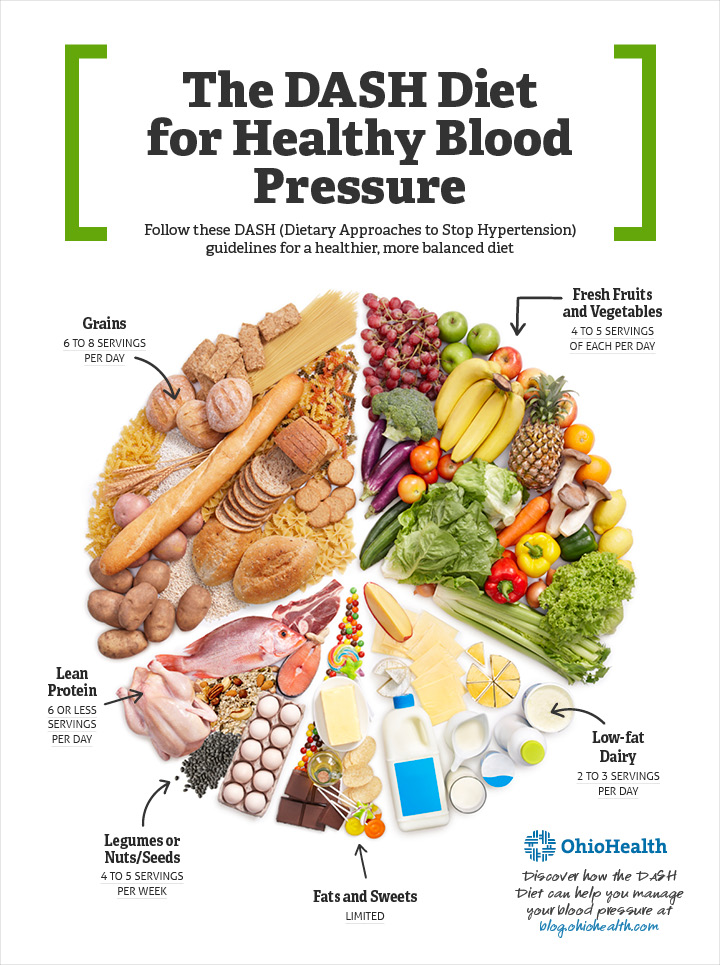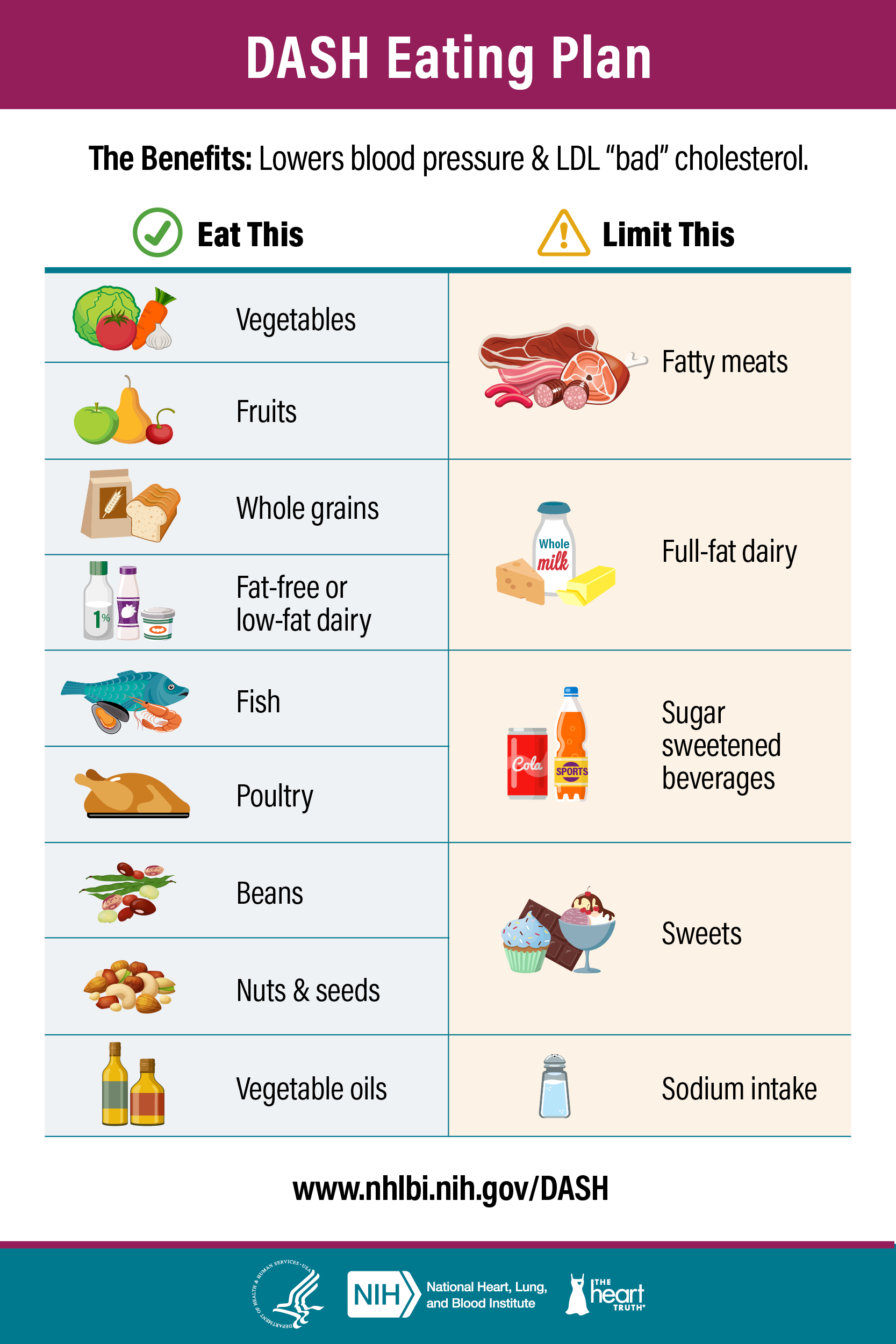The DASH Diet Helps Control Blood Pressure Effectively

The DASH Diet Helps Control Blood Pressure Effectively
High blood pressure, or hypertension, is a prevalent health concern, particularly for middle-aged individuals. As a manageable condition, it often requires lifestyle changes, including dietary adjustments. One of the most effective dietary strategies is the DASH diet (Dietary Approaches to Stop Hypertension), which has been scientifically proven to lower blood pressure and improve overall health. This article explores how the DASH diet works, its benefits, challenges, and practical tips for middle-aged individuals in the United States.

What is the DASH Diet?
The DASH diet is a heart-healthy eating plan designed to prevent and manage hypertension. It emphasizes nutrient-rich foods while limiting sodium, added sugars, and unhealthy fats. Key components of the DASH diet include:
-
Fruits and Vegetables: Rich in potassium, which helps balance sodium levels.
-
Whole Grains: Provide fiber and help maintain healthy cholesterol levels.
-
Low-Fat Dairy Products: Sources of calcium and protein.
-
Lean Proteins: Includes poultry, fish, and plant-based proteins like beans and nuts.
-
Healthy Fats: Found in nuts, seeds, and vegetable oils.
-
Reduced Sodium Intake: A maximum of 2,300 mg per day, with an ideal target of 1,500 mg for better results .2 .5.

How Does the DASH Diet Lower Blood Pressure?
The DASH diet works by addressing key factors that contribute to high blood pressure:
-
Lower Sodium Levels: Reducing sodium intake directly lowers blood pressure by decreasing water retention in the bloodstream .2 .14.
-
Potassium-Rich Foods: Potassium helps relax blood vessels and counteracts the effects of sodium .2.
-
Improved Nutrient Balance: Calcium and magnesium from low-fat dairy products further support vascular health .2 .5.
-
Weight Management: The diet’s focus on whole foods can aid in weight loss or maintenance, which is critical for blood pressure control .10.
Studies have shown that adhering to the DASH diet can reduce systolic blood pressure (SBP) by 6-11 mmHg and diastolic blood pressure (DBP) by 3-5 mmHg—results comparable to some medications .14 .15.

Additional Health Benefits
Beyond lowering blood pressure, the DASH diet offers numerous other health benefits:
-
Heart Health: Reduces risks of heart disease by improving cholesterol levels and reducing inflammation .14.
-
Weight Loss: Encourages healthier eating habits that support sustainable weight management .5.
-
Reduced Risk of Chronic Diseases: Lowers risks of diabetes, kidney disease, and certain cancers .3 .9.
-
Mental Well-being: May improve mood and cognitive function due to its nutrient-dense profile .4 .11.

Challenges of Adopting the DASH Diet
Transitioning to the DASH diet can be challenging for some individuals. Common obstacles include:
-
Reducing Sodium Intake: Many people are accustomed to high-sodium processed foods. Adjusting to lower sodium levels may initially cause cravings or energy fluctuations .5.
-
Cost of Fresh Ingredients: Healthy foods like fresh fruits and vegetables can be more expensive than processed alternatives .6.
-
Time Constraints: Preparing meals from scratch requires planning and effort, which can be difficult for busy individuals .5.
-
Cultural Food Preferences: Adapting traditional recipes to fit the DASH guidelines may require creativity .6.
![]()
Practical Tips for Success
To make adopting the DASH diet easier and more sustainable, consider these practical strategies:
:max_bytes(150000):strip_icc()/ew-flat-belly-mp-sweet-potato-kale-recipe-960-ded849bdde8b4f798c01b37899cc69ea.jpg)
1. Start Gradually
-
Reduce sodium intake incrementally by using herbs and spices instead of salt.
-
Replace one processed snack per day with a piece of fruit or raw vegetables.

2. Plan Ahead
-
Dedicate time each week to plan meals and prepare ingredients in advance.
-
Use grocery lists focused on fresh produce, whole grains, and lean proteins.

3. Experiment with Recipes
-
Explore DASH-friendly recipes online or modify your favorite dishes by reducing salt or substituting healthier ingredients.

4. Focus on Portion Sizes
-
Learn proper serving sizes for different food groups to avoid overeating while ensuring balanced nutrition.

5. Seek Support
-
Involve family members in meal planning to build a supportive environment.
-
Join online communities or use mobile apps designed for DASH adherence .1 .7.

Sample One-Day DASH Diet Meal Plan
Here’s an example of what a day on the DASH diet might look like:
Breakfast:
-
Oatmeal topped with fresh berries and a sprinkle of nuts
-
Low-fat milk
-
Black coffee or herbal tea
Snack:
-
A small handful of unsalted almonds
-
A banana
Lunch:
-
Grilled chicken salad with mixed greens, cherry tomatoes, cucumbers, and olive oil dressing
-
A slice of whole-grain bread
Snack:
-
Low-fat yogurt with sliced peaches
Dinner:
-
Baked salmon seasoned with lemon and dill
-
Steamed broccoli
-
Quinoa or brown rice
Dessert:
-
A small serving of dark chocolate or a fruit salad
Scientific Evidence Supporting the DASH Diet
Numerous studies have validated the effectiveness of the DASH diet in managing hypertension:
-
The PREMIER trial demonstrated that combining the DASH diet with lifestyle changes reduced SBP by 11 mmHg compared to stan







